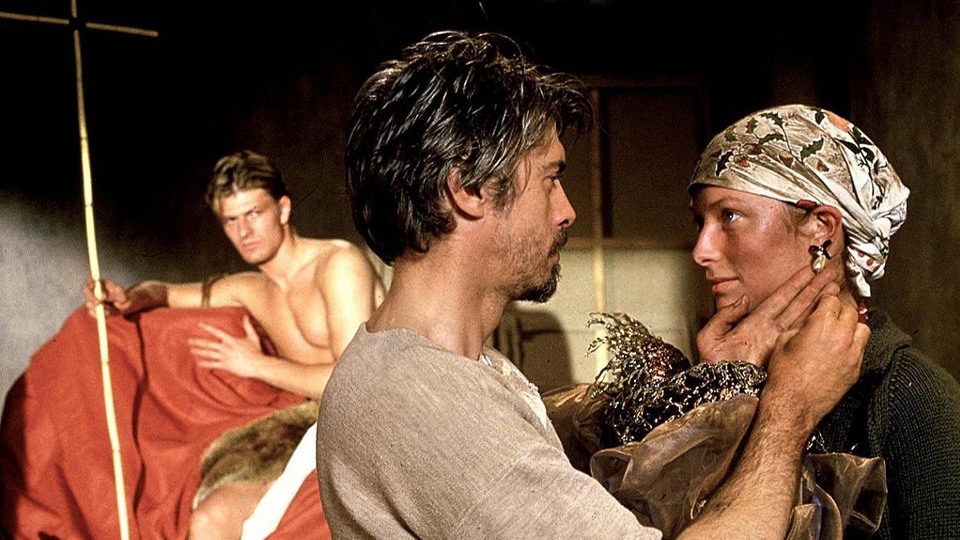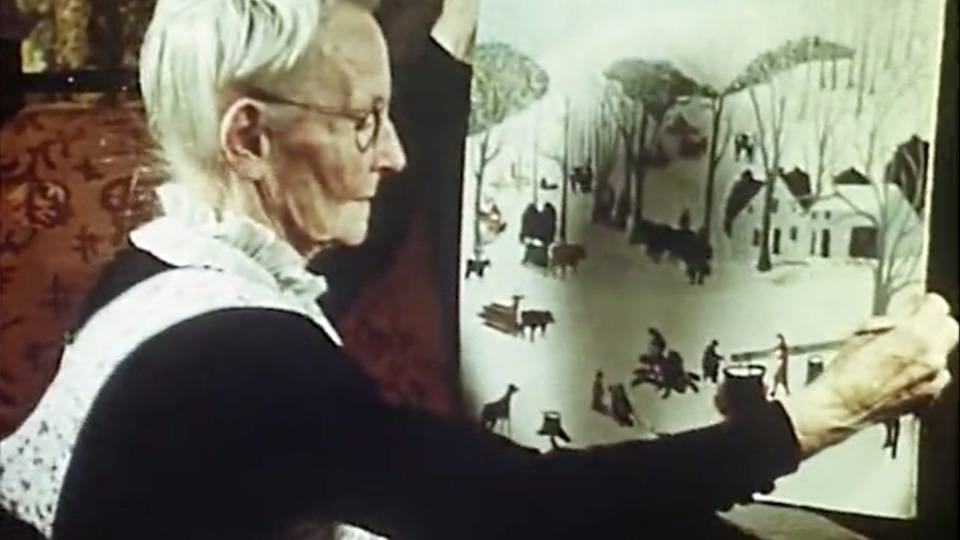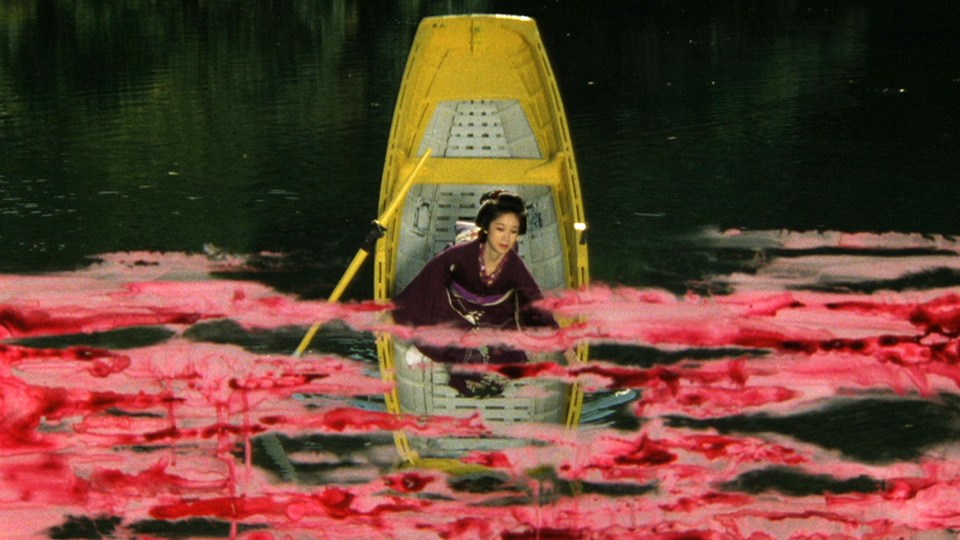
Must Watch: Five Unhacked Movies about Artists
Let’s just face the truth: biopic movies usually go hand in hand with clichés. In a typical movie about a writer, the main character just sits in front of the typewriter and starts to ecstatically type something without any fears or doubts. A typical cinematographic artist is a moody guy with ome ‘demons’, whom he desperately fights, usually while hunched over a canvas with a bottle of gin, illuminated by a sinking fire. So today we decided to offer you a list of five films that add a welcome dose of nuance to the way we think about great artists from Munch to Caravaggio.

Edvard Munch (1974)
Director: Peter Watkins
Edvard Munch movie was initially produced for Norwegian TV and released on screen in the truncated version. The firm did not received much critical acclaim at the Cannes Film Festival back in 1974, and today it is rather hard to say explain why so. The movie was filmed 30 years later after Munch’s death, but the pseudo-documentary style of the film creates an impression that the artist is still alive. The director obviously wanted to the narrow gap between cliché and life, between the artist as he wanted to be remembered and the artist as he existed from day to day. Some Munch biographers tend to suggest that his reputation as a tormented genius was a canny exaggeration of reality, while portraying Munch himself as a genuinely troubled man who was also a brilliant self-mythologizer, but it seems like Watkins actually doesn’t care. There is probably no bigger myth about artists than the notion that they create straight from the heart—that all you need to do to paint a masterpiece is sit down and bleed. In Edvard Munch, Watkins suggests that the legendary rawness of Munch’s art was a kind of illusion, as cunningly crafted as the Mona Lisa. As an illustration, the camera pans across Munch’s Melancholy, and the narrator notes that the artist allowed the preliminary drawings to remain in the final work, to show its spontaneity.

Caravaggio (1986)
Director – Derek Jarman
This movie about the great reformer artist by notorious Avant-Garde director Derek Jarman star Nigel Terry and debuts both Sean Bean and Tilda Swinton. The most peculiar feature of the film is that it deviates from the traditional costumed drama and sets somewhere in Italy in the non-existent period of time, where the Baroque age esthetics is sharing a bunk with the XX century attributes. The movie features, in no particular order, typewriters, leather jackets and motorbikes – all to emphasize the immortal nature of art. Inappropriate, some might say—but inappropriateness seems wholly appropriate for a film about a man who loved boozing, brawling and one-night stands with both sexes under the very nose of the Vatican. To put in other words, the less-historically accurate Caravaggio is, in other words, the truer it is to its subject. The movie is filmed in the Caravaggio colors and creates the strange feeling as if this was exactly the movie the artist would film about himself.

Grandma Moses (1950)
Director: Jerome Hill
This Oscar-nominated documentary short tells the story of American artist Anna Maria Moses, better known simply as Grandma Noses. Early in the film, we’re informed that this will be “a portrait of the artist as an American”—but it’s an advertisement, really, for the U.S.’s newfound cultural supremacy following World War II. The narrator drones on about how Moses’s work upholds America’s rich traditions and triumphant legacy; Moses, meanwhile, opens her mouth only once. Nevertheless, the film also has its virtues, the most important of which are the paintings themselves, that are so great that they are impossible to squeeze between the corny patriotic slogans. The art by Grandma Moses is too strange and melancholy to be reduced to the superficial analysis, but sometimes, it’s enough for a filmmaker to point the camera at an artist’s work and let the viewer do the rest.

My left foot (1989)
Director – Jim Sheridan
This Oscar-winning movie by Jim Sheridan is based on the story of Christie Brown (1932-1981), the Irish writer and artist, The victim of cerebral palsy, he learned how to pain and write with the fingers of his left foot and was highly successful in his creative career. At the same time, only few people who’ve seen the film know that multiple sources alleged that Mary Carr, his wife and nurse, had been abusive and unfaithful to him. It would be difficult to think of a better example of what’s unsatisfying about artist biopic. Most of the time, the subject’s actual life is messier, but ultimately more compelling than the onscreen version. On the other hand, Sheridan’s film distinguishes itself by paying a remarkable amount of attention to Brown’s creative process; it’s hard to think of another movie that gets half as much drama out of the act of touching brush to canvas. Every stroke feels like a victory—and, after all, it was.

Yumeji (1991)
Director – Seijun Suzuki
This movie may be may be the cheekiest joke in the director’s career and tells the story of fictional poet and artists Takehisa Yumeji (portrayed by famous Japanese rock musician). Actually, it appears to be based on the famous early 20th-century artist and poet of the same name who painted his pieces in Nihonga style. But Yumeji isn’t about Yumeji in the same sense that Edvard Munch is about Munch or Frida is about Kahlo. This is biopic about an artist who laughs on all biopics about artists in the world. In Yumeji, the characters and come back to life without batting an eye. Wild dream sequences become suddenly, hilariously mundane. Characters scream, or run away, or have sex for no reason – this a surrealistic fantasy loosely based on creative and personal life of the combined image of the artists, where there is a place for both the ghosts and the subtle detective intrigue, as well as the reflections on creative searches for beauty ideal.
